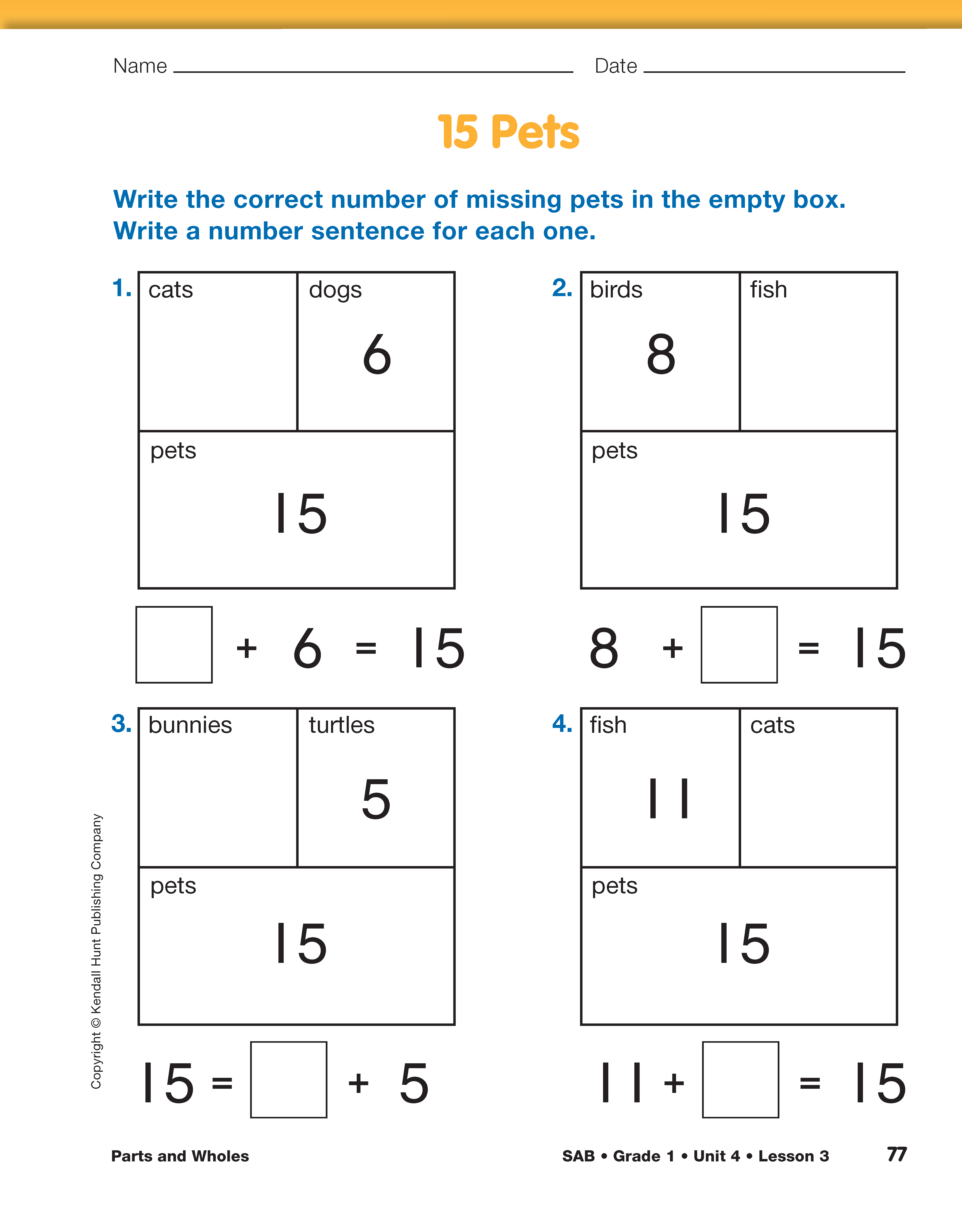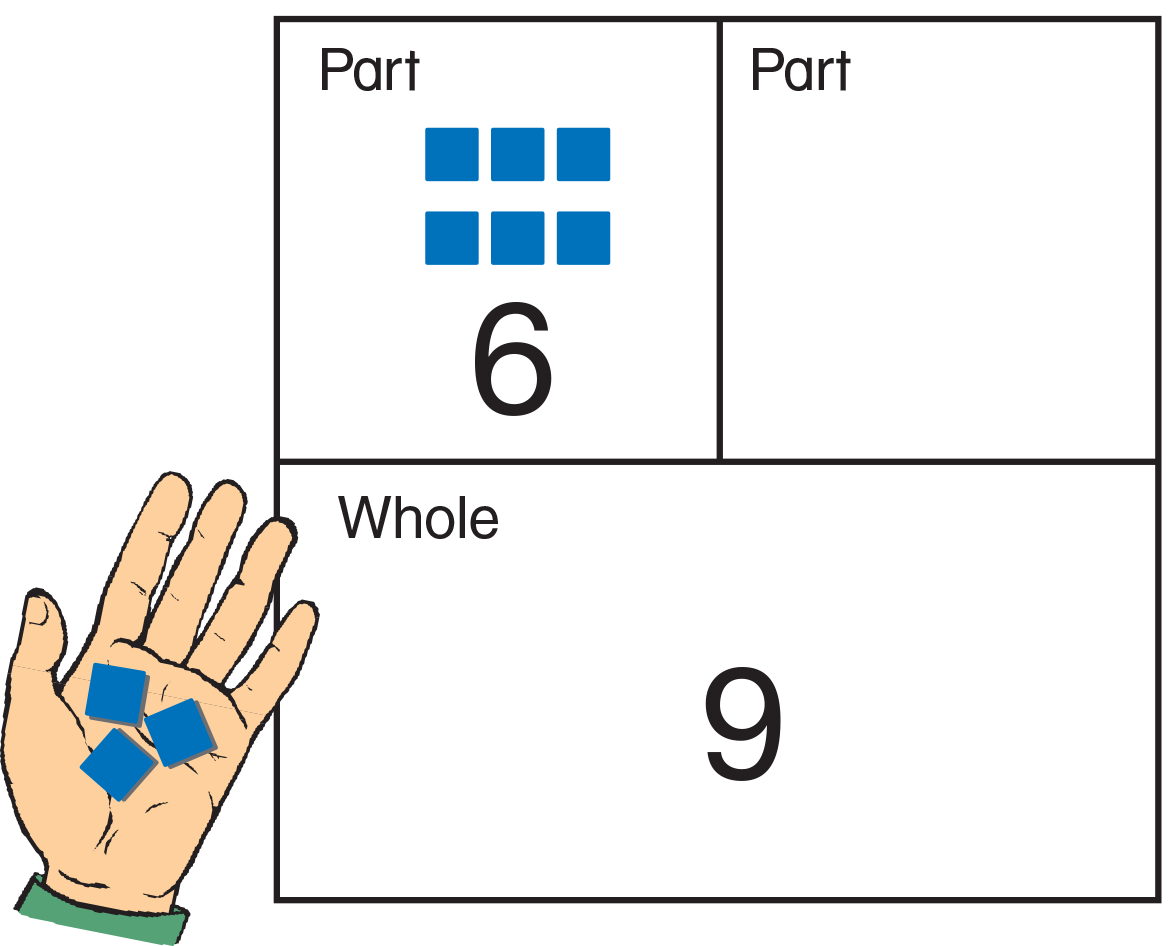Parts and Wholes
Est. Class Sessions: 2-3Developing the Lesson
Part 2: Missing Addends
Use Part-Whole Thinking. Display the Two Parts and the Whole Master. Write an example showing just one addend and the whole, such as 6 + = 9.
Ask:
Solicit suggestions about how to model 6 + = 9 using connecting cubes and the part-whole diagram and have a student demonstrate his or her method on the display.
Place 9 cubes in the "whole" section. Tell students that these cubes represent the 9 in the number sentence. Remove them and write the number 9 in their place. Place 6 of the cubes in one "part" box. Write the number 6 in the box. Tell students that this represents the 6 in the number sentence. One part of the number sentence is missing. Show students that you have 3 cubes remaining in your hand. See Figure 7. Write a 3 in the other "part" box. This is the missing addend. Complete the number sentence, 6 + 3 = 9.
Find Different Strategies. Ask students to talk with a partner about different strategies they could use to solve the problem. As students work, circulate and look for a variety of strategies and tools (e.g., number line, connecting cubes, and ten frames) being used. Identify these students to share their strategies with the class later. Some may begin by comparing two trains of cubes (one 6 and one 9) to determine how many more cubes need to be added to the 6-train to make it the same as the 9-train. Others may begin by building a train of 9 cubes (representing the whole), then break off 6 cubes and discover there are 3 cubes left. See Figure 8. Either can be an effective strategy for solving the problem, but each represents a conceptually different view of the problem. Any strategy that enables a student to reach the correct answer should be accepted.
Share Strategies. Ask students to solve + 5 = 9. Select students to share their strategies for finding the missing addend. Complete the number sentence. Ask other students to use a different method such as using a number line or calculator to check it. See Figure 9.
Assign the 15 Pets page to student pairs. Students use part-whole diagrams to find missing addends. Allow them to use connecting cubes, ten frames, number lines, or any other tools except calculators to help solve the problems.
















